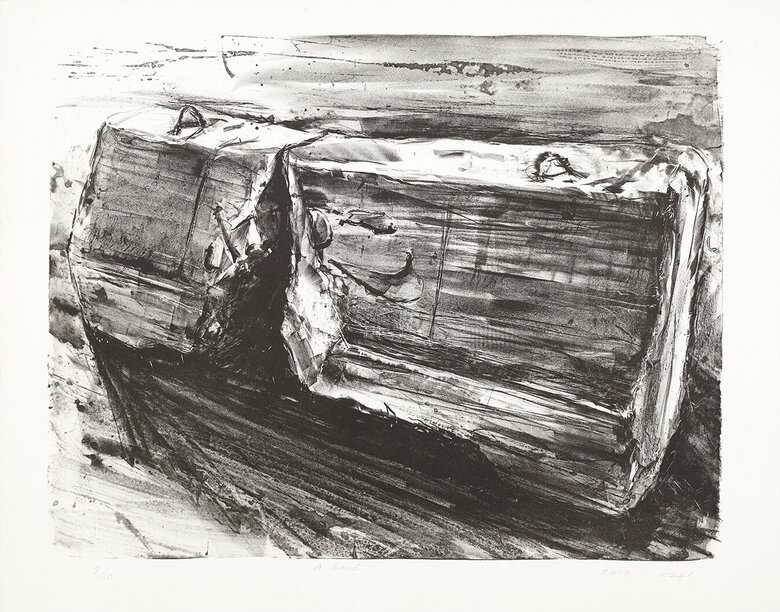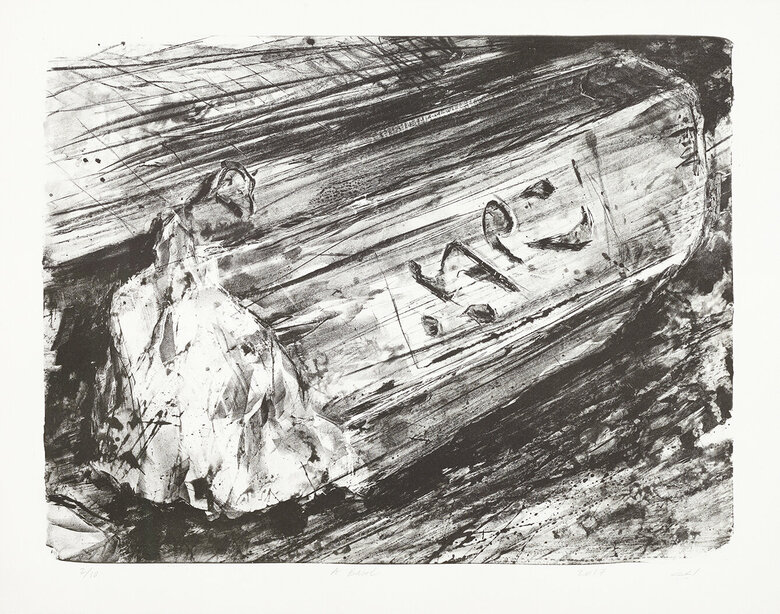Piccadilly Theater, 2019, a larger than life painting by Lebanese artist Ayman Baalbaki, presents the interior of the Piccadilly theater, a landmark of 1970s Beirut. It is painted with a palette dominated by bloody red, opalescent coral, and dark brown tones. A wide ceiling stretches across the top register, detailed with thick, expressive brush strokes that hint at the features and structural elements of the theater. Moving downward, the rows of seats facing the stage are depicted with rough, heavy brushwork, emphasizing the theater’s state of despair. The entire scene is captured with dynamic, almost tumultuous paint application, creating a vivid sense of a once-grand space, witness to Beirut’s golden era in the 1960s and the 1970s, that is now fading.
Baalbaki’s painting depicting Beirut’s Piccadilly deteriorated theater, masterfully captures the essence of post-war Lebanon, intertwining themes of memory, loss, and the enduring hope of renewal. The theater, once a hub of cultural vibrancy in Beirut’s Hamra Street, now stands as a silent witness to the ravages of time and conflict. Baalbaki applies stark gestural brushstrokes of paint to show the theater’s once opulent red velvet seats and its grand arcaded architectural element, creating a visual contrast that embodies the devastation brought by Lebanon’s civil war. The overall picture resembles a scene from a post-apocalyptic disaster movie.
Baalbaki’s incorporation of muted ivory ochre and gray to delineate the arcades creates a somber yet evocative backdrop, hinting at the once-glorious past. The color palette highlights the physical decay of the theater, and serves as a metaphor for the cultural and historical erosion experienced by the nation.
Through his work, Baalbaki engages with a “devoir de mémoire,” a duty to remember, that challenges viewers to confront the past while also envisioning a future beyond the current ruins. The theater has always been one of the few collective communal spaces where individuals from various backgrounds, and different nationalities, come together to experience shared narratives and stories. Both as a literal and figurative space, with its rich memoires and grandiose architectural structure, the theater represents a site of lost glory while holding on to the promise of future narratives which people must come together to enjoy. In this way, Baalbaki not only reflects on the absurdity of war, but also makes a profound statement about the dual nature of destruction and the human capacity for creating hope out of despair.

-Front.jpg)
-Front.jpg)






-Front-1.jpg)
-Front-1.jpg)
-Front-NF.jpg)
-Front-NF.jpg)
-Front.jpg)
-Front.jpg)

